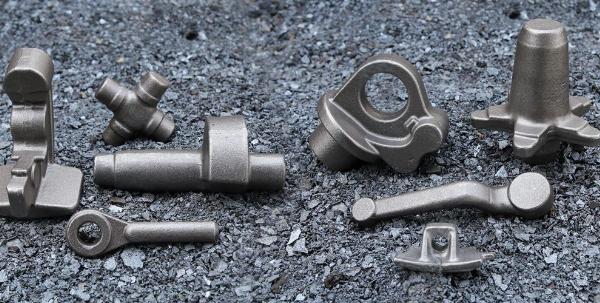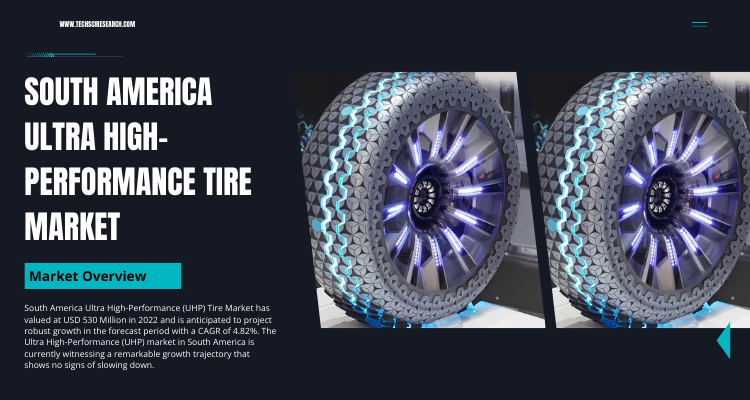Sealing Success Automotive Elastomers Market Enhancing Panels and Hoses

Strong 8k brings an ultra-HD IPTV experience to your living room and your pocket.
According to TechSci Research report, “Global Automotive Elastomers Market - Industry Size, Share, Trends, Competition Forecast & Opportunities, 2028”, the Global Automotive Elastomers Market stood at USD 33 billion in 2022 and is anticipated to grow with a CAGR of 5.73% in the forecast period, 2024-2028. The cross-linked structure created by chemical polymer binding distinguishes automotive elastomers.
They can be used to make a variety of automotive components, including front-end body panels, belts, hoses, seating, dashboards, airbags, door panels, hoses & seals, brakes & suspensions, instrument & soft-touch panels, and others. These automotive elastomers outperform standard rubber drives in terms of heat resistance, flexibility, durability, age resistance, oil, gas & chemical resistance, and weathering & ozone resistance.
As a result, the market for these elastomers has risen significantly and is predicted to continue to grow at a stable rate. Automotive elastomers enable the design and construction of lighter, more compact, and more efficient automobiles, which benefits the automotive sector and has contributed to growth.
The global automotive elastomers market represents a vital and dynamic sector within the broader automotive industry. Elastomers, which are rubber-like materials known for their flexibility, durability, and ability to return to their original shape after deformation, play a crucial role in the design and production of various automotive components. These versatile materials are used in a wide range of applications, including tires, seals, gaskets, hoses, suspension systems, and more. As the automotive industry undergoes continuous transformation and innovation, the demand for elastomers has been on the rise, driven by several key factors.
One of the primary drivers of the global automotive elastomers market is the industry's relentless pursuit of vehicle lightweighting. In response to stringent environmental regulations and consumer demands for improved fuel efficiency, automakers are actively seeking ways to reduce the overall weight of their vehicles.
Elastomers have emerged as an indispensable solution in this pursuit. Their lightweight nature and ability to provide structural support and vibration dampening make them ideal for replacing heavier materials in various automotive applications. Lightweight vehicles not only consume less fuel but also emit fewer greenhouse gases, aligning with global sustainability goals. The impact of elastomers on reducing the weight of unsprung components, such as suspension parts, contributes to enhanced handling, ride comfort, and overall vehicle dynamics, thereby improving the driving experience. Another major driving force behind the automotive elastomers market's growth is the increasing adoption of electric vehicles (EVs).
As the automotive industry transitions toward cleaner and more sustainable transportation solutions, the demand for EVs, including battery electric vehicles (BEVs) and hybrid electric vehicles (HEVs), is on the rise. EVs require specialized elastomeric materials to meet unique performance and safety requirements. Elastomers are used for battery encapsulation, providing electrical insulation, thermal management, and environmental protection for lithium-ion battery packs.
Browse over market data Figures spread through 180 Pages and an in-depth TOC on "Automotive Elastomers Market.” @ https://www.techsciresearch.com/report/automotive-elastomers-market/19287.html
They play a crucial role in maintaining optimal operating temperatures for electric motors and power electronics, ensuring the efficiency and durability of these components. Moreover, elastomers are instrumental in reducing noise, vibration, and harshness (NVH) in EVs, contributing to a quieter and more comfortable ride.
Advancements in material technology are continuously driving innovation within the automotive elastomers market. Manufacturers are continually working to enhance elastomer properties and develop new formulations that meet evolving industry requirements. High-performance elastomers, including silicone and fluoroelastomers, are in high demand due to their exceptional resistance to extreme temperatures, chemicals, and environmental factors.
Incorporating nanomaterials as fillers in elastomer formulations is an emerging trend, resulting in improved mechanical properties and durability. The development of smart elastomers capable of changing their properties in response to external stimuli holds promise for applications in adaptive suspension systems and self-healing materials for automotive components. Furthermore, additive manufacturing, such as 3D printing, is being explored as a method for producing customized elastomeric components, offering rapid prototyping and design flexibility.
The global expansion of the automotive industry, particularly in emerging markets, is contributing significantly to the demand for automotive elastomers. Countries in the Asia-Pacific region, notably China and India, have emerged as major automotive manufacturing hubs.
The increasing production of vehicles in these regions has led to a surge in the demand for elastomers to support various automotive applications. To cater to local demand and reduce transportation costs, automotive manufacturers are establishing production facilities in emerging markets. This localization trend not only boosts the demand for elastomers but also strengthens the automotive supply chain in these regions. Rising middle-class populations and urbanization in emerging markets have led to higher vehicle ownership rates, further fueling the demand for automotive elastomers. Additionally, increased investments in infrastructure, including road networks and transportation systems, are driving the production of commercial vehicles, which, in turn, increases the demand for elastomers in these markets..
Major companies operating in the Global Automotive Elastomers Market are:
- Dow
- LANXESS
- DuPont.
- ExxonMobil Corporation
- BASF SE.
- SABIC
- Huntsman International LLC
- Continental AG
- INEOS
- Mitsui Chemicals, Inc
Download Free Sample Report @ https://www.techsciresearch.com/sample-report.aspx?cid=19287
Customers can also request for 10% free customization on this report.
“The global automotive elastomers market is experiencing robust growth, driven by key factors such as the industry's commitment to lightweighting for improved fuel efficiency, the increasing adoption of electric vehicles, stringent environmental regulations, and ongoing advancements in material technology. Elastomers, known for their flexibility and durability, play a pivotal role in various automotive applications, including tires, seals, gaskets, and suspension components. They contribute to reduced vehicle weight, NVH control, and thermal management in EVs, aligning with sustainability goals. Additionally, compliance with environmental regulations has led to the development of low-VOC and bio-based elastomers. As the automotive industry continues to evolve, the demand for innovative elastomeric solutions remains high, making the automotive elastomers market a critical component of the global automotive sector.,” said Mr. Karan Chechi, Research Director with TechSci Research, a research-based management consulting firm.
“Automotive Elastomers Market – Global Industry Size, Share, Trends, Opportunity, and Forecast, Segmented By Vehicle Type (Passenger Cars, Commercial Vehicles), By Type (Thermoset, Thermoplastic), By Application Type (Tire, Interior, Exterior, Under the Hood) By Region, By Competition, 2018-2028”, has evaluated the future growth potential of Global Automotive Elastomers Market and provides statistics & information on market size, structure and future market growth. The report intends to provide cutting-edge market intelligence and help decision makers take sound investment decisions. Besides, the report also identifies and analyzes the emerging trends along with essential drivers, challenges, and opportunities in the Global Automotive Elastomers Market.
You may also read:
Automotive NVH Materials Market Insight $12 Billion Dynamics Unveiled
Automotive Relay Market Driving $18B Growth, 6.03% CAGR Forecast
Commercial Vehicle Flooring Market Shaping Landscape with USD 541.63M
Commercial Vehicle Thermal System Market Shaping Landscape, USD 31.72B
Passenger Car Flooring Market Sustainable Trends $852.41 Million
Table of Content-Automotive Elastomers Market
- Introduction
1.1. Product Overview
1.2. Key Highlights of the Report
1.3. Market Coverage
1.4. Market Segments Covered
1.5. Research Tenure Considered
- Research Methodology
2.1. Objective of theStudy
2.2. Baseline Methodology
2.3. Key Industry Partners
2.4. Major Association and Secondary Sources
2.5. Forecasting Methodology
2.6. Data Triangulation & Validation
2.7. Assumptions and Limitations
- Executive Summary
3.1. Market Overview
3.2. Market Forecast
3.3. Key Regions
3.4. Key Segments
- Impact of COVID-19 on Global Automotive Elastomers Market
- Global Automotive Elastomers Market Outlook
5.1. Market Size & Forecast
5.1.1. By Value
5.2. Market Share & Forecast
5.2.1. By Vehicle Type Market Share Analysis (Passenger Cars, Commercial Vehicles)
5.2.2. By Type Market Share Analysis (Thermoset, Thermoplastic)
5.2.3. By Application Type Market Share Analysis (Tire, Interior, Exterior, Under the Hood)
5.2.4. By Regional Market Share Analysis
5.2.4.1. Asia-Pacific Market Share Analysis
5.2.4.2. Europe & CIS Market Share Analysis
5.2.4.3. North America Market Share Analysis
5.2.4.4. South America Market Share Analysis
5.2.4.5. Middle East & Africa Market Share Analysis
5.2.5. By Company Market Share Analysis (Top 5 Companies, Others - By Value & Volume, 2022)
5.3. Global Automotive Elastomers Market Mapping & Opportunity Assessment
5.3.1. By Vehicle Type Market Mapping & Opportunity Assessment
5.3.2. By Type Market Mapping & Opportunity Assessment
5.3.3. By Application Type Market Mapping & Opportunity Assessment
5.3.4. By Regional Market Mapping & Opportunity Assessment
- Asia-Pacific Automotive Elastomers Market Outlook
6.1. Market Size & Forecast
6.1.1. By Value
6.2. Market Share & Forecast
6.2.1. By Vehicle Type Market Share Analysis
6.2.2. By Type Market Share Analysis
6.2.3. By Application Type Market Share Analysis
6.2.4. By Country Market Share Analysis
6.2.4.1. China Market Share Analysis
6.2.4.2. India Market Share Analysis
6.2.4.3. Japan Market Share Analysis
6.2.4.4. Indonesia Market Share Analysis
6.2.4.5. Thailand Market Share Analysis
6.2.4.6. South Korea Market Share Analysis
6.2.4.7. Australia Market Share Analysis
6.2.4.8. Rest of Asia-Pacific Market Share Analysis
6.3. Asia-Pacific: Country Analysis
6.3.1. China Automotive Elastomers Market Outlook
6.3.1.1. Market Size & Forecast
6.3.1.1.1. By Value
6.3.1.2. Market Share & Forecast
6.3.1.2.1. By Vehicle Type Market Share Analysis
6.3.1.2.2. By Type Market Share Analysis
6.3.1.2.3. By Application Type Market Share Analysis
6.3.2. India Automotive Elastomers Market Outlook
6.3.2.1. Market Size & Forecast
6.3.2.1.1. By Value
6.3.2.2. Market Share & Forecast
6.3.2.2.1. By Vehicle Type Market Share Analysis
6.3.2.2.2. By Type Market Share Analysis
6.3.2.2.3. By Application Type Market Share Analysis
Note: IndiBlogHub features both user-submitted and editorial content. We do not verify third-party contributions. Read our Disclaimer and Privacy Policyfor details.







